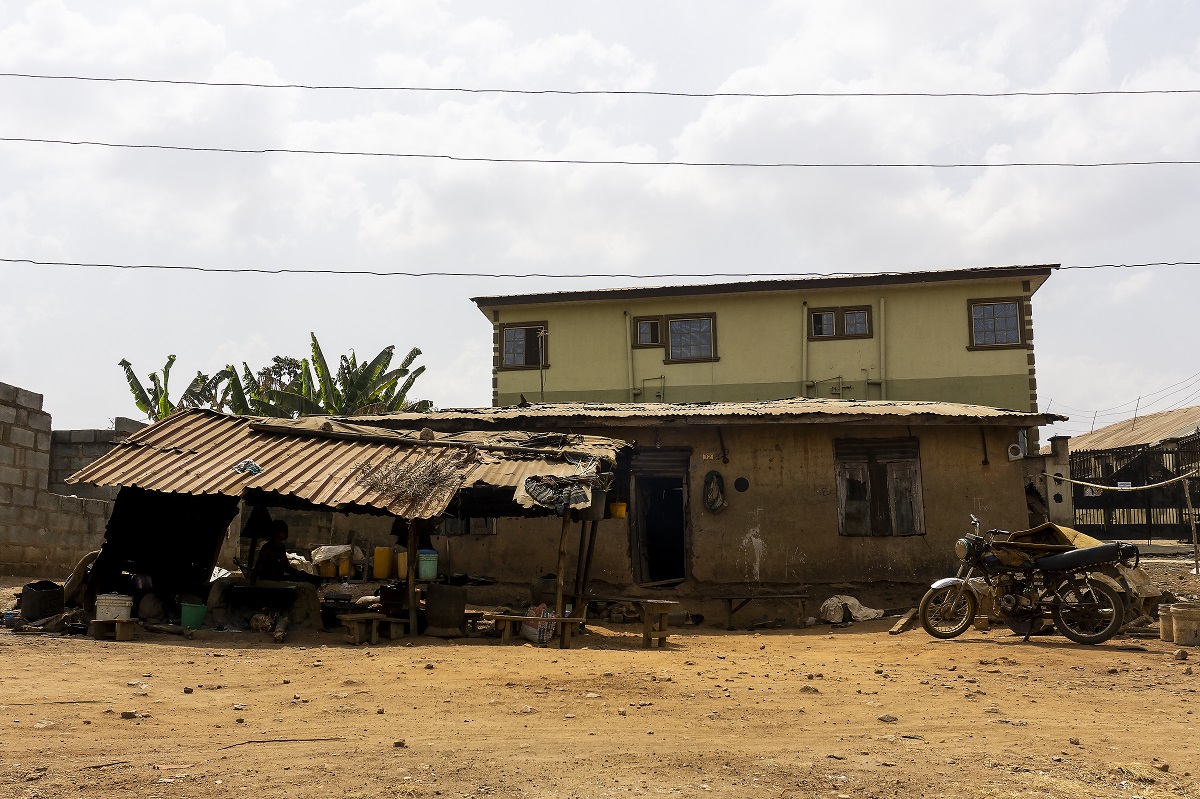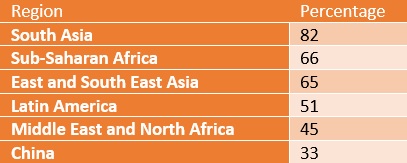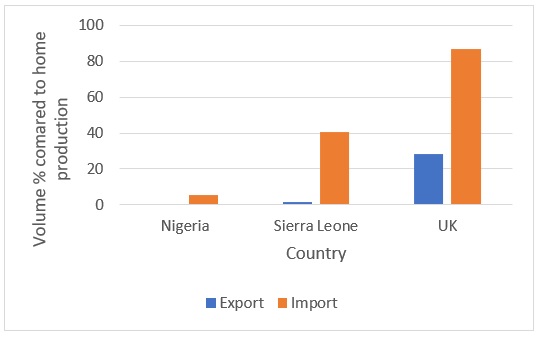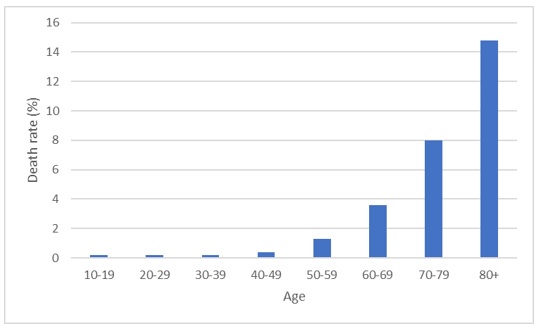
Keith Tomlins, Professor of Food Science, NRI |
How might COVID-19 affect food systems in LMICs (Low- and Middle-Income Countries)? Of the few published articles about food and pandemics, most refer to obesity or high-income countries. [1,2] Regarding LMICs, the Ebola outbreak in 2014 caused severe food shortages, higher prices by up to 150% and contributed to reduced food security, poorer infant and young child feeding practices and poorer nutrition. [2,3]
It subsequently led to a reduction in the consumption of bush meat4, the raw or minimally processed meat that comes from wild animals, which has been identified as a possible source of contagion. The experience of the Ebola epidemic seems to indicate that the impact of COVID-19 on food systems in LMICs could be much worse than in higher-income nations because of important differences in the food systems. For example, in LMICs, food chains tend to rely more on local food production than imports (Figure 1) and if these local food chains are disrupted, imports may not be able to fill the gap.
Food systems in LMICs may also heavily rely on the informal sector (Table 1), which is characterised by high levels of self-employment and lack of job security; diverse participants, both men and women, many of whom suffer economic hardship, and a high incidence of poverty; small-scale enterprises which are capital constrained and risk averse, and operations which are unregulated in terms of decent work practices. Hence, the informal sector may be less resilient during a pandemic. COVID-19 disproportionally affects people over the age of 60 (Figure 2); older, possibly more experienced, staff in food businesses may become ill, disrupting delivery systems and food supplies. To ensure continuity of food supplies, business owners should consider how to maintain the effective operation of their business, in the event that they are unable to work due to COVID-19.
NRI research in LMICs tells us that consumers have diverse food preferences5 and behaviours6,7, related to identity, attitudes and perceptions. This may help explain panic buying seen during the COVID-19 outbreak in many countries where individuals’ lack of confidence in supply systems and a fear of being unable to access or afford food at a later date overcame social values against bulk buying and leaving others short.
To reduce food shortages, our food loss and waste research suggests a number of strategies that authorities in LMICs might consider as part of advance preparation:
- Identifying staple food products that might be most affected: if supplies of easier-to-store staples such maize, rice and wheat are short in supply, root and tuber crops may be critical staples. Working with actors in the food chains on appropriate storage and processing of these crops will be essential to maintain nutritious and safe food supplies.
- Identifying new sources of imported foods may help prevent scarcities if local food chains start to fail.
- Panic purchases might lead to increased food waste and loss which already can be as high as 30% and research suggests that this can affect losses at all stages of the food chain [8,9]. Losses could be reduced by restricting the quantity of items that consumers can purchase.
- Preventing nutrition losses10,11 in the value chain is critical if food is in short supply. Encouraging farmers, processors and consumers to store and use food appropriately or share it with others will help.
- Biofortified staples [12] may also be key to managing nutrition deficits.
In responding to the COVID-19 crisis, researchers at NRI stand shoulder to shoulder with our overseas partners and businesses in the value chains, and aim to offer any support they may need in developing efficient and affordable food loss management and storage systems in the longer term.
There are numerous gaps in our knowledge about the impact of pandemics on food systems in LMICs. Future pandemics are likely to follow COVID-19. It is critical that researchers gather lessons to help make our food systems more resilient and help save lives.

Source: Vanek, J., Chen, M., Carré, F., Heintz, J. and Hussmanns, R. (2014) Statistics on the Informal Economy: Definitions, Regional Estimates and Challenges, WIEGO Working Paper
Table 1: Informal employment as a proportion of non-agricultural employment

Source: FAOSTAT data for 2017. Note: these are crude figures. Not all agricultural production will be for food and imports and exports may be double counted
Figure 1: Volume of agricultural imports and exports (MT) expressed as a percentage of home agricultural production

Source: Chinese Center for Disease Control and Prevention
Figure 2: Death rate from COVID-19 by age
References
- Ekici, A., Keskinocak, P. & Swann, J. L. Modelling influenza pandemic, intervention strategies, and food distribution. under review, Manufacturing and Service Operations Management, 23-36 (2010).
- Huff, A. G., Beyeler, W. E., Kelley, N. S. & McNitt, J. A. How resilient is the United States’ food system to pandemics? Journal of Environmental Studies and Sciences 5, 337-347 (2015).
- Kodish, S. R. et al. A qualitative study to understand how Ebola Virus Disease affected nutrition in Sierra Leone—A food value-chain framework for improving future response strategies. PLoS neglected tropical diseases 13 (2019).
- Dindé, A. O. et al. Response to the Ebola-related bushmeat consumption ban in rural Côte d’Ivoire. Agriculture & Food Security 6, 28 (2017).
- Tomlins, K. et al. Consumer acceptability and sensory evaluation of a fermented cassava product (Nigerian fufu). Journal of the Science of Food and Agriculture 87, 1949-1956, doi:10.1002/jsfa.2941 (2007).
- Forsythe, L., Njau, M., Martin, A., Bechoff, A. & Tomlins, K. Staple food cultures: a case study of cassava ugali preferences in Dar es Salaam, Tanzania. (2017).
- Bechoff, A. et al. Women eat more rice and banana: the influence of gender and migration on staple food choice in East Africa. (2020).
- Naziri, D. et al. The diversity of postharvest losses in cassava value chains in selected developing countries. Journal of Agriculture and Rural Development in the Tropics and Subtropics 115, 111-123 (2014).
- Tomlins, K. et al. Reducing postharvest losses in the OIC member countries. COMCEC Agricultural Working Group, 1-194 (2016).
- Bechoff, A. et al. (Natural Resources Institute, 2019).
- Shee, A. et al. Determinants of postharvest losses along smallholder producers maize and Sweetpotato value chains: an ordered Probit analysis. Food Security 11, 1101-1120 (2019).
- Birol, E., Meenakshi, J. V., Oparinde, A., Perez, S. & Tomlins, K. Developing country consumers' acceptance of biofortified foods: a synthesis. Food Security 7, 555-568, doi:10.1007/s12571-015-0464-7 (2015).
Find out more:
- NRI's Development Programme on Food Loss, Waste Reduction and Value Addition
- NRI’s Food and Nutrition Security Initiative (FaNSI)

